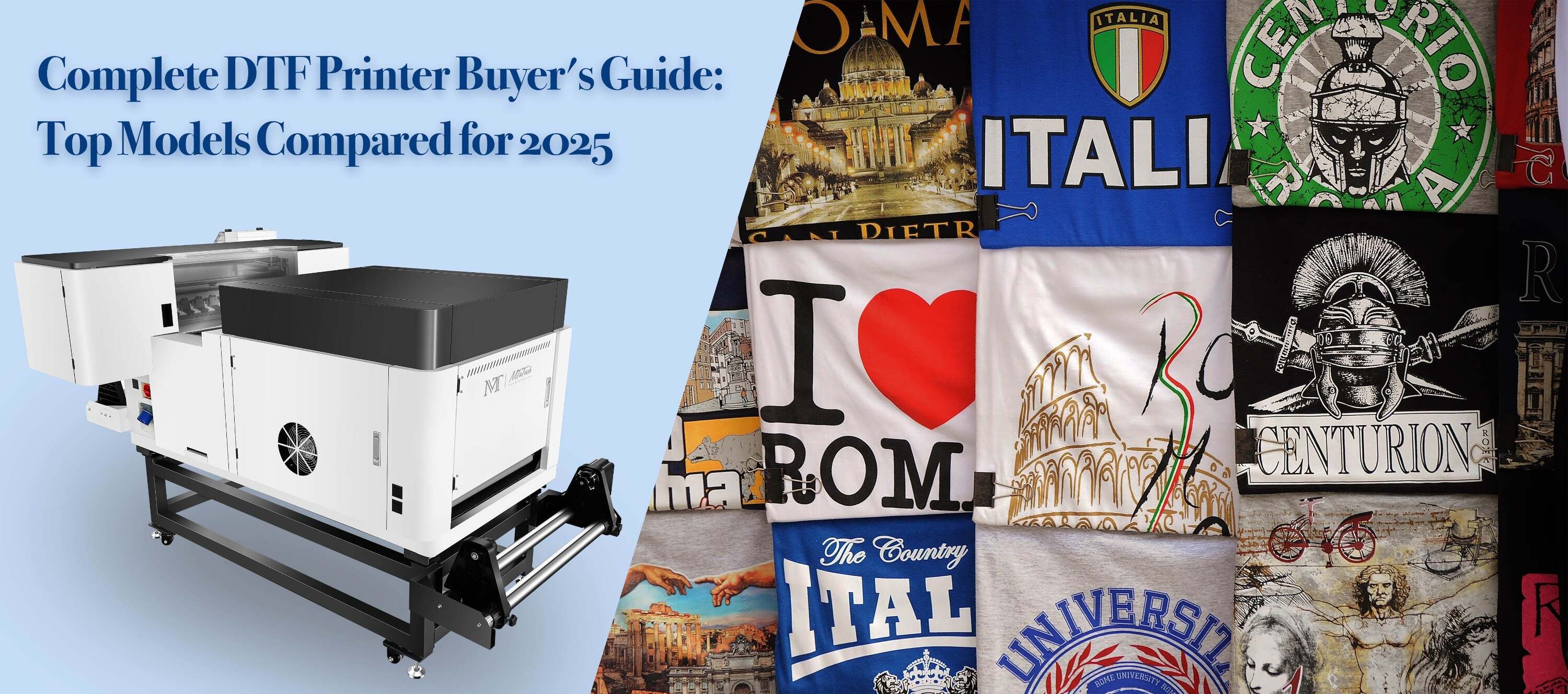Introduction
In the world of printing, Direct to Film (DTF) technology has rapidly gained traction due to its flexibility and cost-effectiveness. As an entrepreneur in the printing industry, selecting the right DTF printer can significantly impact your overall business performance, quality of output, and customer satisfaction. This guide will help you navigate the essential factors to consider when choosing the best DTF printer for your printing business.
Why Choose DTF Printing?
DTF printing is revolutionizing the textile industry with its numerous benefits. Here are some reasons why you might want to consider investing in a DTF printer:
Cost-Effective: DTF printers are generally more affordable than traditional screen printing setups.
Flexibility: They allow printing on a variety of materials, including cotton, polyester, and blends.
High Quality: DTF prints are vibrant and durable, making them suitable for numerous applications.
Ease of Use: DTF printers are easier to operate and maintain compared to other printing technologies.
Key Features to Look for in a DTF Printer
When selecting a DTF printer, it's essential to evaluate specific features that cater to your business needs. Here are some critical aspects to consider:
1. Print Quality
The print quality is paramount to customer satisfaction. Look for printers that offer high-resolution outputs capable of producing vibrant colors and intricate details. Check user reviews or samples to gauge the print quality before making a decision.
2. Printing Speed
In a fast-paced business where time is money, speed matters. Investigate the printer's throughput capabilities—how many prints can it produce per hour. A faster printer can help you fulfill larger orders more efficiently, thus improving your profit margins.
3. Ink Compatibility
Inks vary in quality and cost. Some printers offer a range of ink options that can affect both vibrancy and durability. Look for printers compatible with high-quality DTF inks that can withstand multiple washes without fading.
4. Ease of Use
The usability of a printer is critical, especially if your team is not technically proficient. Consider features like touchscreen interfaces, easy navigation, and straightforward maintenance procedures.
5. Size and Design
Consider the physical space you have available for the printer. Larger printers might require more room, so measure your workspace. Additionally, the printer’s design should facilitate easy loading and unloading of materials.
6. Software Integration
Some printers come equipped with proprietary software that simplifies the printing process. Ensure that the software is user-friendly and supports various design formats commonly used in the industry.
7. Customer Support and Warranty
Reliable customer support is invaluable, especially if you encounter technical issues. Assess the warranty options available and read reviews regarding the manufacturer's support responsiveness.
Budget Considerations
Determining your budget upfront can streamline the decision-making process. DTF printers come at various price points:
Entry-Level Printers: Ideal for small businesses or hobbyists, these typically range from $1,000 to $5,000.
Mid-Range Printers: Suitable for established businesses, priced between $5,000 and $15,000, often offering better speed and quality.
High-End Printers: Best for large-scale operations, starting at $15,000 and going upwards. These models deliver exceptional quality and performance.
While it may be tempting to choose the cheapest option, consider the long-term impact on your printing quality and operational uptime.
Brand Reputation and Reviews
Researching well-known brands and reading customer reviews can substantially influence your purchase decision. Reliable manufacturers often have a history of customer service and product satisfaction. Consider brands that specialize in DTF printing technology and have established a positive reputation in the market.
Hands-on Testing
If possible, visit local suppliers to test the printer models you are considering. Hands-on experience can provide insights into the printer’s performance, ease of use, and overall build quality. Some suppliers may even provide demos, allowing you to see the printer in action and assess its output quality.
Future-Proofing Your Investment
Technology evolves rapidly, and investing in a printer that aligns with future advancements is crucial. Consider the following:
Look for printers that support upgrades or new technology.
Ensure the availability of spare parts and maintenance kits to prolong the printer’s lifespan.
Conclusion
Choosing the best DTF printer for your printing business involves careful consideration of numerous factors, from print quality and speed to budget and brand reputation. By evaluating these essential considerations and doing thorough research, you're more likely to select a printer that meets your needs and helps your business thrive.
Investing in a high-quality DTF printer could prove to be a game-changer for your printing business. For more insights and quality options, explore our high-quality DTF printers here.
FAQ
What is a DTF printer?
A DTF printer uses transfer film to apply designs onto various substrates, providing a cost-effective solution for high-quality printing on textiles.
How does DTF printing differ from DTG printing?
While both techniques involve printing directly onto fabrics, DTF printing utilizes transfer films, making it more versatile and allowing for print on multiple materials compared to DTG, which typically works best on cotton.
Can I print on dark fabrics with a DTF printer?
Yes, DTF printing is suitable for both light and dark fabrics, as it involves using special white ink that allows vibrant colors to stand out on dark backgrounds.
What kind of maintenance is required for DTF printers?
Regular maintenance includes cleaning the print head, replacing inks, and ensuring that the printer's software is updated. Following the manufacturer's guidelines will help minimize downtime and maintain print quality.
How long do DTF prints last?
DTF prints are known for their durability and can last many washes when using quality inks and proper application techniques, making them a long-lasting choice for textiles.

